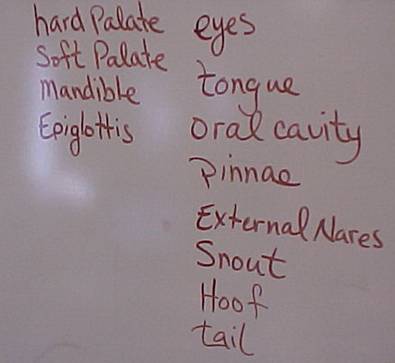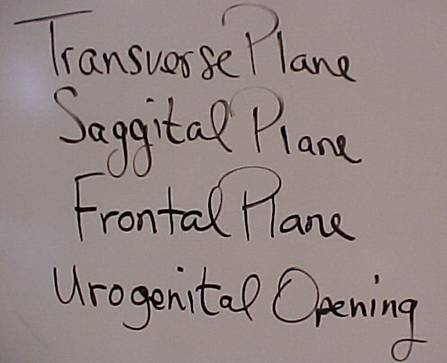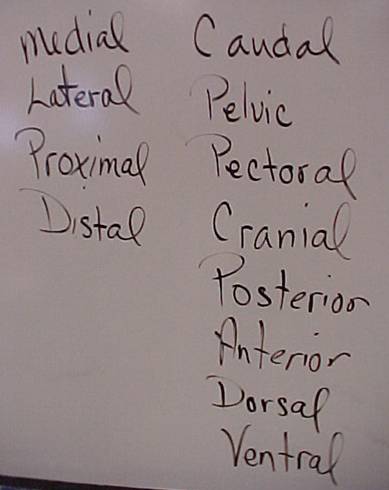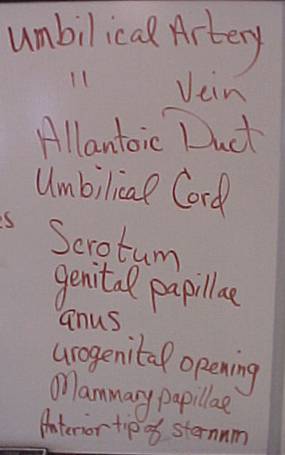Notes from
the Science Room Whiteboard
These
terms and the previous handout are fair game for quizzes until the end of the
year.
April
8, 2004




Whiteboard
Fetal Pig Anatomy Terms defined
- Hard
palate: Anterior portion of the roof of the oral cavity
- Soft
palate: Dorsal portion of the roof of the oral cavity
- Mandible:
The lower jaw of a vertebrate animal.
- Epiglottis:
folds over the glottis to prevent food and liquid from entering the trachea
during the act of swallowing.
- Eyes:
the vertebrate organ of vision.
- Tongue:
The fleshy, movable, muscular organ, attached in most vertebrates to the
floor of the mouth, the principal organ of taste
- Oral
cavity: mouth
- maxilla:
Either of a pair of bones of the human skull fusing in the midline and
forming the upper jaw.
- Pinnae:
the largely cartilaginous projecting portion of the external ear
- External
nares: Opening in the nasal cavity of a vertebrate; a nostril.
- Snout:
The projecting nose, jaws, or anterior facial part of an animal's head.
- Hoof:
The horny sheath covering the toes or lower part of the foot of a mammal
- Tail: The posterior part of an
animal, especially when elongated and extending beyond the trunk or main
part of the body.
- Transversal
plane: a horizontal plane passing through the standing body so that the
transverse plane is parallel to the floor.
- Sagittal
plane: A vertical plane passing through the standing body from front to
back, that separates the body into left and right portions.
- Frontal
plane: A plane parallel to the long axis of the body and perpendicular to
the sagittal plane that separates the body into front and back portions.
- Urogenital
opening: opening in the skin for the urethra; allows for the expulsion of
liquid wastes
- Pelvic:
Having to do with the pelvis, the lower part of the abdomen, located
between the hip bones
- Pectoral:
muscles of the "anterior chest" (the front of the chest).
- Umbilical
artery: Carries oxygenated blood from the mother to the fetus
- Umbilical
vein: Carries de-oxygenated blood from the fetus to the mother
- Umbilical
cord: The flexible cordlike structure connecting a fetus at the abdomen with
the placenta and containing two umbilical arteries and one vein that
transport nourishment to the fetus and remove its wastes.
- Scrotum:
The external sac of skin enclosing the testes in most mammals.
- Genital
papillae: external, visible portion of the vulva (female)
- Mammary
papillae: nipples; indicate how many mammary glands there are
- Anterior tip of sternum: end of the breast bone nearest
the head




